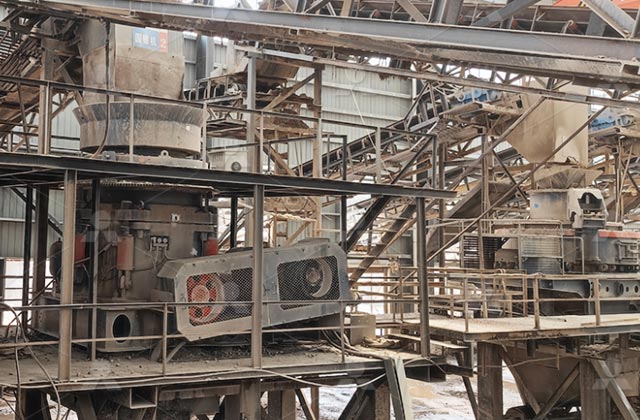A 150 tons per hour limestone crushing line is a medium-capacity aggregate production system designed to process limestone into various sizes suitable for construction, road building, and industrial uses. The line consists of multiple equipment, each performing specific functions to ensure efficient processing and high-quality output. Below is a detailed breakdown of a typical limestone crushing line designed to achieve a capacity of 150 tons per hour.

1. Primary Crushing: Jaw Crusher
The first step in the limestone crushing process is primary crushing, which typically involves a jaw crusher. This machine is designed to handle large, uncrushed limestone blocks and reduce them to smaller sizes. The jaw crusher works by compressing the limestone between two jaws, one fixed and the other moving, which results in the material being broken into manageable pieces.
- Capacity: A typical jaw crusher for a 150 TPH limestone crushing line would have a feed size of around 600–1000 mm, with a discharge size ranging from 40 mm to 200 mm, depending on the desired product.
- Model Selection: A model like the PE750×1060 or PE900×1200 is commonly used for such a capacity range.
2. Secondary Crushing: Impact Crusher or Cone Crusher
After the primary crushing stage, the material is conveyed to a secondary crusher for further size reduction. Depending on the desired final product, either an impact crusher or cone crusher may be used.
- Impact Crusher: If the goal is to create more granular or sand-like products, an impact crusher is typically used. This machine uses high-speed rotors with hammers to strike the limestone, causing it to break into finer pieces.
- Cone Crusher: If more controlled and precise size reduction is required (for aggregates with consistent gradation), a cone crusher may be chosen. It uses a rotating mantle and a concave surface to crush the material through compression.
Both crushers are essential for reducing the limestone from a large to a medium size, which can be further processed in the final stages.
3. Screening and Washing: Vibrating Screen and Sand Washer
After secondary crushing, the crushed limestone is sent to a vibrating screen to separate the material by size. The screen helps sort out oversized material that requires further crushing and smaller, usable material.
- Vibrating Screen: A multi-layer vibrating screen will classify the limestone into different size fractions. For example, a 3-layer vibrating screen may separate the material into three groups: fine material (below 5 mm), medium material (5-20 mm), and coarse material (above 20 mm).
- Washing (if necessary): In some applications, especially for fine aggregates, a sand washer might be added to wash away impurities like clay or silt that can affect the quality of the final product. This is especially useful if the limestone is being used in industries like construction or concrete production, where material purity is crucial.
4. Final Product: Aggregate or Powder
The final product from a 150 TPH limestone crushing line can vary based on the specific requirements of the application. Typically, the output will consist of a range of aggregate sizes:
- Coarse Aggregate: Used in road construction, concrete production, and as a base material for construction projects.
- Fine Aggregate: Smaller-sized limestone that can be used in concrete, asphalt, and other products requiring finer material.
- Limestone Powder: For some applications, especially in the production of cement or other industrial products, limestone may be ground into a fine powder.
5. Other Considerations
- Conveyors: Belt conveyors are crucial for transporting crushed material from one machine to another, optimizing workflow and reducing handling costs.
- Dust Control: To prevent dust pollution and ensure worker safety, dust control systems like water sprays or dust collectors are often installed around crushers and screens.
Conclusion
A 150 tons per hour limestone crushing line is an efficient and scalable system for processing limestone into various aggregate sizes, ensuring that industries like construction, road building, and manufacturing can access high-quality materials. The key to achieving a high processing rate lies in the integration of robust equipment, including a primary jaw crusher, secondary impact or cone crushers, screening and washing systems, and conveyors for smooth operation.
